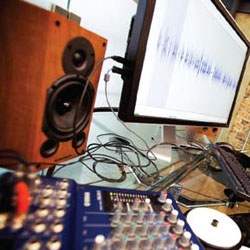
6. Be Careful Of Phase
Speaking of phase, you can’t always be sure of the polarity of the microphone cables and signal chain, so it’s best to check every track as you add it to the mix.
Check both positions of the phase switch and select the one with the most low end.
This is especially important with audience mics, which can be subject to comb effects because of their distance from the stage and each other.
7. Be Careful Of Adding Effects
Because you already have a lot of leakage on different instruments, adding effects to one instrument or vocal can sometimes spill over onto other instruments or vocals, which might begin to wash the mix out.
Also, depending upon how large the venue is, there may be a lot of built-in ambience that you can use instead of adding something artificial (unless it’s a unique effect required by the song).
8. Be Careful With EQ
Just like with effects, any EQ added to one instrument or vocal that has leakage on the track can affect the sound of other instruments as well.
This is a good reason to build your mix first, then add any individual EQ to see how it affects everything else in the total mix.
9. Use The High Pass Filter
Just like in studio recording (maybe even more so), the high pass filter is your friend. The HPF can clean up the sound considerably on every instrument and vocal, even kick and bass.
Especially in a live recording, there’s a lot of low frequency information that gets recorded (like leakage from the subs) that isn’t useful and the HPF effectively eliminates it, which cleans the mix up like magic.
10. Don’t Over Compress
Once again, just like with effects, any compression added to one instrument or vocal that has leakage may affect the sound of another instrument as well.
Compression on individual tracks is almost always needed to control the dynamics of a live recording, but you’re better off to start with a gentle 2 or 3 dB of compression, then increase if needed until it begins to negatively affect the sound of another instrument.
It’s also best to build your mix first, then add compression. If you need more compression than what you can comfortably add to individual tracks, you can always squash the stereo bus.
Follow these 10 steps, and you’ll find that you’ll be able to produce a better sounding product – and in less time than you think. Happy mixing!
Bobby Owsinski is a veteran audio professional and the author of several books about live and recorded sound.
